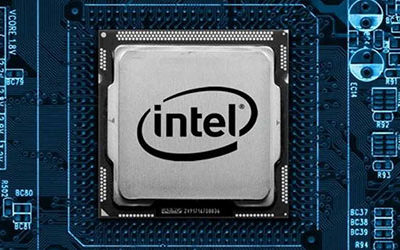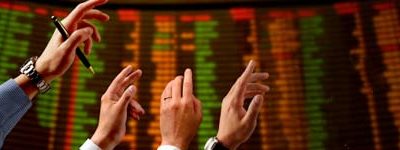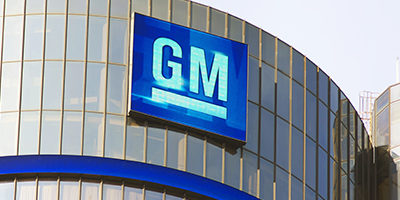%
Jubak’s Picks Performance 1997-2019
Jubak’s Picks
Buy and hold? Not really.
Short-term trading?
Not by a long shot.
So what is the stock-picking style of The Jubak’s Picks portfolio?
Click to expand...
Click to View the Jubak’s Picks Portfolio
I try to go with the market’s momentum when the trend is strong and the risk isn’t too high, and I go against the herd when the bulls have turned piggy and the bears have lost all perspective. What are the results of this moderately active — the holding period is 12 to 18 months — all-stock portfolio since inception in May 1997? A total return of 584% as of December 31, 2019. That compares to a total return on the S&P 500 stock index of 335% during the same period.
%
Top 50 Stocks Performance 2019
Top 50 Stocks
This long-term, buy-and-holdish portfolio was originally based on my 2008 book The Jubak Picks.
Trends that are strong enough, global enough, and long-lasting enough to surpass stock market averages.
Click to expand...
Click to view the Top 50 Stocks Portfolio
In The Jubak’s Picks Portfolio I identified ten trends that were strong enough, global enough, and long-lasting enough to give anyone who invested in them a good chance of beating the stock market averages.
To mark the publication of my new book on volatility, Juggling with Knives, and to bring the existing long-term picks portfolio into line with what I learned in writing that book and my best new ideas on how to invest for the long-term in a period of high volatility, I’m completely overhauling the existing Top 50 Picks portfolio.
You can buy Juggling with Knives at bit.ly/jugglingwithknives
%
Dividend Income Performance 2021
Dividend Income
Every income investor needs a healthy dose of dividend stocks.
Why bother?
Why not just concentrate on bonds or CDs?
Click to expand...
Click to view the Dividend Income Portfolio
Because all the different income-producing assets available to income investors have characteristics that make them suited to one market and not another. You need all of these types of assets if you’re going to generate maximum income with minimum risk as the market twists and turns.
For example: bonds are great when interest rates are falling. Buy early in that kind of market and you can just sit back and collect that initial high yield as well as the capital gains that are generated as the bonds appreciate in price with each drop in interest rates.
CDs, on the other hand, are a great way to lock in a yield with almost absolute safety when you’d like to avoid the risk of having to reinvest in an uncertain market or when interest rates are crashing.
Dividend stocks have one very special characteristic that sets them apart from bonds and CDs: companies raise dividends over time. Some companies raise them significantly from one quarter or year to the next. That makes a dividend-paying stock one of the best sources of income when interest rates start to rise.
Bonds will get killed in that environment because bond prices will fall so that yields on existing bonds keep pace with rising interest rates.
But because interest rates usually go up during periods when the economy is cooking, there’s a very good chance that the company you own will be seeing rising profits. And that it will raise its dividend payout to share some of that with shareholders.
With a dividend stock you’ve got a chance that the yield you’re collecting will keep up with rising market interest rates.
But wouldn’t ya know it?
Just when dividend investing is getting to be more important—becoming in my opinion the key stock market strategy for the current market environment—it’s also getting to be more difficult to execute with shifting tax rates and special dividends distorting the reported yield on many stocks.
I think there’s really only one real choice—investors have to pull up their socks and work even harder at their dividend investing strategy. That’s why I revamped the format of the Dividend Income portfolio that I’ve been running since October 2009. The changes aren’t to the basic strategy. That’s worked well, I think, and I’ll give you some numbers later on so you can judge for yourself. No, the changes are designed to do two things: First, to let you and me track the performance of the portfolio more comprehensively and more easily compare it to the performance turned in by other strategies, and second, to generate a bigger and more frequent roster of dividend picks so that readers, especially readers who suddenly have a need to put more money to work in a dividend strategy, have more dividend choices to work with.
Why is dividend investing so important in this environment? I’ve laid out the reasons elsewhere but let me recapitulate here. Volatility will create repeated opportunities to capture yields of 5%–the “new normal” and “paranormal” target rate of return–or more as stock prices fall in the latest panic. By using that 5% dividend yield as a target for buys (and sells) dividend investors will avoid the worst of buying high (yields won’t justify the buy) and selling low (yields will argue that this is a time to buy.) And unlike bond payouts, which are fixed by coupon, stock dividends can rise with time, giving investors some protection against inflation.
The challenge in dividend investing during this period is using dividend yield as a guide to buying and selling without becoming totally and exclusively focused on yield. What continues to matter most is total return. A 5% yield can get wiped out very easily by a relatively small drop in share price.
Going forward, I will continue to report on the cash thrown off by the portfolio—since I recognize that many investors are looking for ways to increase their current cash incomes. But I’m also going to report the total return on the portfolio—so you can compare this performance to other alternatives—and I’m going to assume that an investor will reinvest the cash from these dividend stocks back into other dividend stocks. That will give the portfolio—and investors who follow it—the advantage of compounding over time, one of the biggest strengths in any dividend income strategy.
What are some of the numbers on this portfolio? $29,477 in dividends received from October 2009 through December 31, 2013. On the original $100,000 investment in October 2009 that comes to a 29.5% payout on that initial investment over a period of 39 months. That’s a compound annual growth rate of 8.27%.
And since we care about total return, how about capital gains or losses from the portfolio? The total equity price value of the portfolio came to $119,958 on December 31, 2012. That’s a gain of $19,958 over 39 months on that initial $100,000 investment or a compound annual growth rate of 5.76%.
The total return on the portfolio for that period comes to $49,435 or a compound annual growth rate of 13.2%.
How does that compare to the total return on the Standard & Poor’s 500 Stock Index for that 39-month period? In that period $100,000 invested in the S&P 500 would have grown to $141,468 with price appreciation and dividends included.) That’s a total compounded annual rate of return of 11.26%.
That’s an annual 2 percentage point advantage to my Dividend Income portfolio. That’s significant, I’d argue, in the context of a low risk strategy.
Portfolio Related Posts
Intel cuts dividend by 66%, stock drops just 2.26% on the day
So it wasn’t much of a surprise to most investors–although some of us were hoping that Intel (INTC) would hold its dividend steady after a big bond offering in the last few weeks. But today Intel cuts its dividend by 66% to 12.5 cents a share from a prior 36.5 cents. The stock dropped only 2.26% on that big news.
Please Watch My New YouTube Video: Quick Pick Cameco
Today I posted my two-hundred-and-thirty-ninth YouTube video: Quick Pick Cameco Today’s Quick Pick: Cameco (NYSE: CCJ). I’m not a fan of nuclear power. Relying on an energy source that produces waste that will remain radioactive for thousands of years when we have no real solution for long-term disposal, is, to me, not the best idea. However, we’ve waited so long to deal with climate change and we still haven’t upgraded the grid so that wind and solar can replace current baseload power sources, so nuclear power will remain in the mix longer than expected. And might even see an increase in its share of the electricity market. Cameco is one of the largest producers of uranium in the world. The company has a lot of capacity that it can bring back into production since it shut down a number of mines when demand for uranium was down. The stock is up about 35% in the last year, 30% year to date, and 16% in the last month. For the trailing 12 months, the company was actually profitable ($116 million), following a loss in 2021 and 2020. You may want to wait for another dip in the general stock market for this one, or dollar cost average into it, but for global warming solutions, this is a good play since we’ve dragged our feet until we’re in an emergency that will require non-optimum, shall we say, solutions. I’ll be adding the stock to my Jubak Picks Portfolio tomorrow, February 22.
Wednesday’s rally in the market’s most speculative stocks is the last straw for me: I said I’d be a seller into any post-Fed rally–but what specifically would I be selling? Here are the 12 stocks I’d sell now
The rally on February 15 sure looked like a speculative blowout of the kind that often signals a market top. For me, it was the last straw and I’m selling into the rally. This post tells you what I’m selling and how I arrived at these decisions. But first, a few words on Wednesday’s move.
Adding Equinor as another energy play to my Jubak Picks Portfolio tomorrow
Today, Wednesday, February 8, Equinor (EQNR) reported a record $74.9 billion adjusted operating profit for 2022. That more than doubled the previous record. If you’re looking to add an energy stock to your portfolio ahead of a year that looks likely to be a good one for energy stocks, I’d suggest Equinor. I’ll be adding it to my Jubak Picks Portfolio tomorrow with a target price of $40 a share.
Please Watch My New YouTube Video: Quick Pick Intel
Today I posted my two-hundred-and-thirty-second YouTube video: Quick Pick Intel Today’s Quick Pick: Intel (NASDAQ: INTC). Intel’s revenue and earnings report last week was terrible. It was a classic kitchen sink quarter, where the company laid out all the bad news at once, so investors only have positive things to look forward to. The stock was trading at $28 on January 31, and the 52-week range is $52.5 – $24, so we’re currently pretty close to the bottom of the range. The 2022 loss is a little over 38% but year to date, even with all of this bad news, the stock is actually up 5.75. If you have a longer time range, this is the time to buy Intel. We’re close to a bottom here and their plans going forward include new chips and, in 2024, new technology that can really compete with AMD. Additionally, Intel’s fab business, where they manufacture chips designed by other companies, went up about 30%. They are one of the few companies left that are actually manufacturing the chips, (their biggest competitor being Taiwan Semiconductors.) As Intel improves its own technology, its fab business will grow and become more appealing to chip designers. As long as Intel hits its projected milestones throughout 2023, this is a good buy for 2024.
General Motors reports record revenue in fourth quarter and big beat on earnings
General Motors (GM) shares are up 8.34% as of the close today after the company reported a huge jump in earnings for the fourth quarter and the full year. For the quarter the car company reported adjusted earnings per share of $2.12 versus an expected $1.69, and revenue of $43.1 billion versus an expected $40 billion. Revenue grew by 28% year over year. For the full year, GM reported EBIT profit of $14.5 billion, near the high end of its forecast of $13 billion to $15 billion.
AbbVie raises dividend again–but only by 5%
Once a company has put in the time and money to make the Dividend Aristocrats list, the company isn’t likely to squander that investment just because a recession looms. To make the list–and garner a big chunk of cash from conservative dividend investors–a company has had to pay a dividend for a least 25 consecutive years and has had to raise that dividend every year. A company like 3M (MMM), which owns a 64-year record of paying and raising its dividend payout, is as close to a dividend sure thing as exists. Which is why it’s not surprising that AbbVie (ABBV), which owns a 50-year record of paying and raising its dividend, announced that it would raise its dividend in 2023 to $1.48 a quarter with the February 2023 payout. That would bring the annual dividend yield to 3.5% But…
I’m selling Dow tomorrow out of my Dividend Portfolio
The November rally was kind to Dow (DOW) with the stock up 10.4% from November 1 through December 1. The shares have given back some of that lately, but I’d still like to book any gains here ahead of a possible recession or at least a further economic slowdown in 2023.











